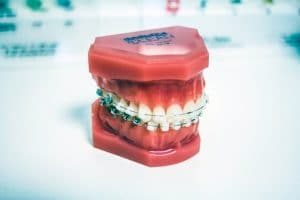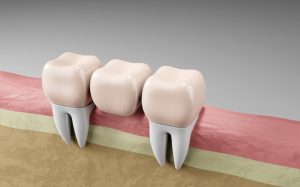When it comes to aesthetic treatments, dental braces are perhaps the most popular searches on the internet. And there’s a pretty solid reason for it. Your smile is essentially the gateway to a world of self-confidence and self-esteem. And when your smile is right, all is right in the world. And dental braces play a very central role in achieving this particular goal.
Table of Contents
But what are dental braces?
Braces are an effective solution to any type of teeth positioning issue (or more specifically, malocclusions) that you may have. Dental braces, or orthodontic treatment, are particularly important for individuals, specifically children, who are at an increased risk of gum disease owing to improper placement/overcrowding of their teeth.
Correcting the misalignment not only prevents the disease from occurring, but it also improves the appearance of your upward grin. As a result, you’re oozing self-confidence, and flaunting those perfect chompers.
An orthodontist is a specialist that takes care of these issues, and we at Anoka Dental have amazingly skilled experts on our team. Whether your child has an alignment or bite issue, or you do, don’t worry. Dental braces work for anyone and everyone.
What are the types of dental braces?
Traditional braces/Metal braces
These are the braces which we’ve seen on almost everybody we know who is undergoing or has undergone orthodontic treatment. These consist of brackets or bands that are fixed to your teeth, along with flexible wires that hold them together. Some dental braces might also include metal ties or rubber bands that fix the brackets to the main wire. These create pressure and help bring your teeth into position.

But perhaps the biggest con is the unaesthetic appeal and lack of discreetness of this form of treatment. Furthermore, the brackets and wires can cause a lot of irritation to the gums and oral tissues.
Ceramic braces
A more esthetic form of traditional braces. The brackets are made up of ceramic instead of stainless steel, so they’re not entirely visible. But this form of treatment has two main downsides –
- Cost of treatment is higher than traditional dental braces.
- Ceramic braces might take longer to correct malocclusions.
Lingual braces
This therapy includes positioning the brackets facing your tongue, to the backsides of your teeth. These have a higher esthetic value and is ideal for those who don’t want to worry about their appearance during this treatment.
However, it should be noted that lingual braces are costlier, and require exceptional skill by the orthodontist administering the treatment. These dental braces may also cause issues with speech since the tongue is in close contact with the brackets and wires that are placed.
Invisible braces/Clear aligners
With the advent of Invisalign (we’ve all heard this name), orthodontic treatment became insanely revolutionized. Clear aligners include clear trays that fit snugly onto your teeth. You can remove them while brushing, flossing and eating. But for them to work properly, you need to be wearing them for at least 22 hours a day.
But as you might have already guessed, it is the priciest of all the orthodontic treatments available. However, the esthetic value is the highest. And it is also the most common route taken by adults who never had traditional braces, but want to correct their smile without undergoing the traditional annoyance.
Will I be needing retainers after dental braces?
Yes. After your dental braces are taken off, your teeth are cleaned and then impressions are taken for a retainer. Retainers help in keeping your newly fixed smile in alignment and prevent relapse (teeth moving back to their original spaces.) They are custom made appliances that help teeth settle into your jaw bone and hold them in place.
Are there different types of retainers too?
Yes. Retainers are essentially divided into two main groups – removable and fixed. And the most common types of retainers are the Hawley (removable), clear trays (removable) and the permanent (fixed) ones.
Hawley retainers
These are also called wire retainers since they include a wire along with an acrylic base that fits into the shape of your mouth. While a Hawley retainer is removable and long-lasting, it is bulkier than clear trays and can irritate the oral cavity. Furthermore, it may affect your speech.
Clear retainers
These are similar to the invisible dental braces, meaning you will have clear, removable trays. The fact that it is invisible, makes it more likely to be a favorable form of treatment. However, it comes with its own set of disadvantages – can’t be repaired if broken, can warm if exposed to heat, can become discolored, and can also cause cavities due to trapping of fluids.
Permanent retainers
Akin to lingual braces, fixed/permanent retainers include a wire running along the back of your front teeth. These can only be removed by your dentist. And they’re mostly used when your dentist at Anoka Dental thinks that your teeth are more prone to relapse, or if it involves somebody with lower compliance, ie a child. The main disadvantage, however, is the difficulty in maintaining oral hygiene.
Taking care of braces and retainers.
Taking care of your dental braces and your retainers is super important, but it isn’t rocket science either.
- Avoid tough, hard-to-bite, or sticky foods.
- You get special brushes for cleaning between your brackets. And your dentist at Anoka will show you how to floss, especially when you have braces or a permanent retainer.
- Retainers need to be washed and disinfected with a cleanser in warm (not hot!) water.
- If you lose a band/bracket or break a wire, you will have to schedule an appointment with your dentist to get it taken care of.
What can I expect from my dental braces or retainers?
The course of treatment depends on how severe your problem is, and the health of the underlying tissues. The time also varies with age. While dental braces work the same in children and adults, the latter might require a little extra help. Your dentist at Anoka Dental will do a thorough examination, and advise a treatment method.
Orthodontic treatment can become painful or uncomfortable. But it’s nothing that can’t be helped with over-the-counter pain killers. However, if the pain seems unbearable, your dentist will make adjustments accordingly.
Dental braces also require routine visits, so getting in touch with a family dentist is advised since it cuts down on separate visits for separate people. We would also suggest that if you’re living around Anoka, Coon Rapids, Dayton, Ramsey or Champlin, don’t bother searching google for a “dentist near me”. We are the dentists near you. So come on down to Anoka Dental, and let us help achieve your dreamy smile.




